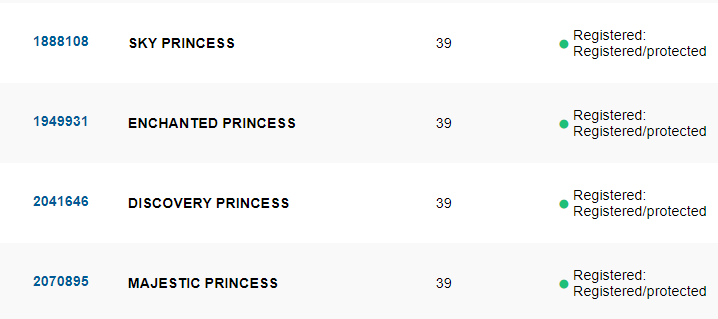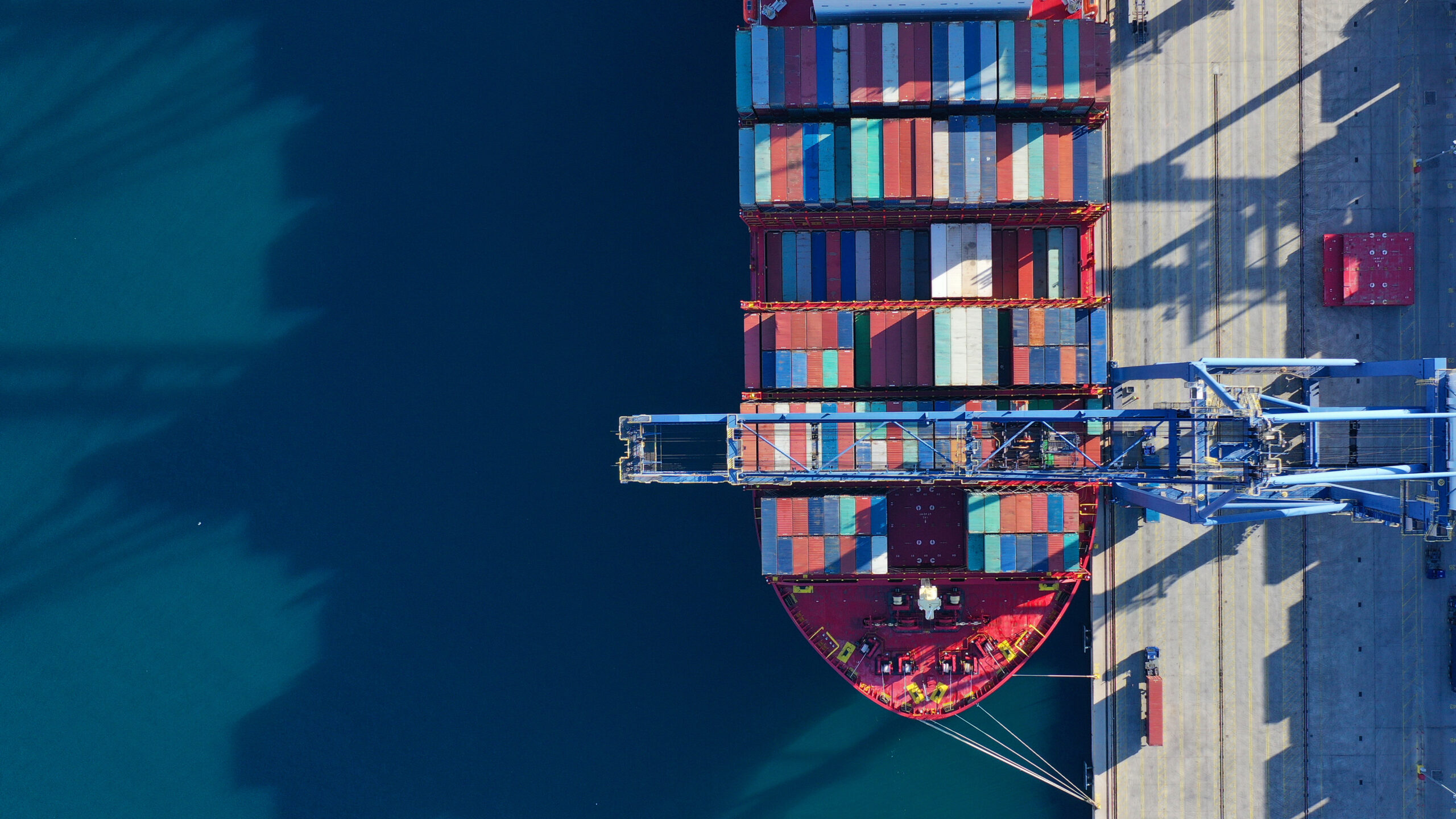22 May 2023
Branding for sea vessels is an important consideration for cruise line operators, ferry operators, and luxury vessel operators. The name of the vessel is a part of the allure of the experience, and as such is an important element in the marketing message to consumers. Such important brand indicia should be protected by a trade mark registration.
Cruise liner operators are careful to attend to this. Princess Cruise Lines Ltd, by way of illustration, has registrations in place for all of its vessels. Here is a partial extract from the Australian trade marks register:



The suffix element common to all of the vessels, “PRINCESS”, serves as a house brand, and was registered of itself back in 1990.
When developing a brand for a vessel, however, the trade mark registry is not the end of the enquiry.
Within Australia, Regulation 24(2) of the Shipping Registration Regulations 2019 provides a list of prescribed names for ships. Some of these criteria are obvious, and some not so. Here is an extract from the regulations:
…the following classes of names are prescribed:
(a) names of existing registered ships;
(b) names approved by the Registrar in respect of ships in the course of registration;
(c) names that are likely to be confused with, or mistaken for, names referred to in paragraph (a) or (b);
(d) names that are likely to be offensive to members of the public;
(e) names of, or suggesting connection with, members of the Royal family or suggesting Royal patronage;
(f) names falsely suggesting connection with:
(i) the Crown; or
(ii) the Commonwealth of Nations; or
(iii) the Government of the Commonwealth, of a State, of a Territory, of any other country or of any legal subdivision of another country; or
(iv) the United Nations; or
(v) the Defence Force or an arm of the Defence Force; or
(vi) a government department, authority or instrumentality of the Commonwealth, a State or a Territory; or
(vii) a municipal or other local government authority;
(g) names that include a prefix comprising any letter or letters capable of indicating a type of ship.
The operation of that regulation means that ship names such as “King Charles”, “City of Perth”, “Canadian Princess”, and “Ferry Plus” would be prohibited, even if they were capable of registration on the trade marks register.
The List of Registered Ships is maintained by the Australian Maritime Safety Authority, and is located here: https://www.amsa.gov.au/vessels-operators/ship-registration/list-registered-ships
(This article only considers the position in Australia. Branding of vessels which travel internationally face some additional considerations. Some countries do not have prohibitions on the duplication of ship names – for example, the United States. But other jurisdictions do for vessels over a certain size, such as Canada. International law requires that every ship be registered in a country. That country is the vessel’s flag state, and the vessel is subject to the laws of that flag state, and so in some jurisdictions the approach is that the flag state’s laws apply to the naming of a ship.)
The importance of a brand in a vessel is underscored by the Australian Trade Mark Office’s decision in Sitmar Cruises Ltd v Carnival Cruise Lines Inc [1992] ATMO 62 (2 October 1992), which was successfully appealed to the Federal Court as Carnival Cruise Lines Inc v Sitmar Cruises Ltd [1994] FCA 68. That dispute concerned a number of related brands: FAIRSTAR THE FUNSHIP; SITMAR’S FUNSHIP; and FUNSHIP. In that decision, Gummow J noted,
“… the marks “Fun Ship” and “Fun Ships” were used so as to indicate the connexion between Carnival and the services to be provided by means of its cruises, and to distinguish Carnival Cruises from those operated by other traders. Accordingly, in my view, before the dates of the relevant applications by Sitmar, there had been public use in Australia of “Fun Ship” and “Fun Ships” as trade marks so as to confer upon Carnival the statutory status of “proprietor” of those trade marks…”
Our conclusion is that brand consultants and vessel operators should give consideration to not just the trade mark register when developing a new brand for a vessel, but also the List of Registered Ships, to mitigate the risk that what one registrar permits, the other may disallow
Disclaimer: The information published in this article is of a general nature and should not be construed as legal advice. Whilst we aim to provide timely, relevant and accurate information, the law may change and circumstances may differ. You should not therefore act in reliance on it without first obtaining specific legal advice.

 View Profile
View Profile
 Back to news
Back to news Read article
Read article